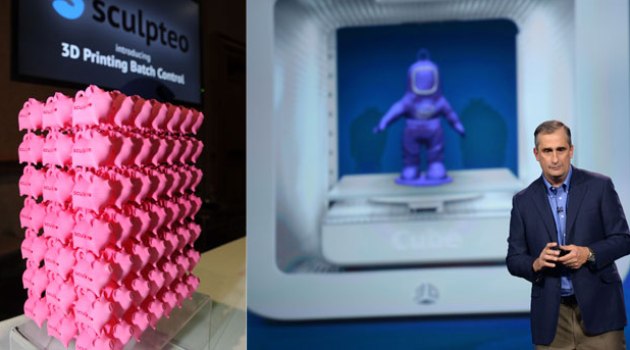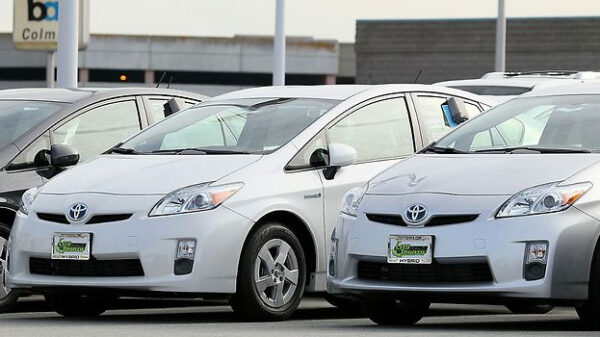
(L)Pink plastic pigs created with the Sculpteo 3D printing cloud engine are displayed at “CES: Unveiled,” the media preview for International CES, at the Mandalay Bay Convention Center January 5, 2014 in Las Vegas, Nevada. CEO Brian Krzanich discusses 3-D printing during his keynote address at the 2014 International CES at The Venetian hotel, January 6, 2014 in Las Vegas, Nevada/ AFP
LAS VEGAS, January 9- A 3D printing trend playing out at the Consumer Electronics Show bodes a future in which shoes, eyeglass frames, toys and more are printed at home as easily as documents.
Music star will.i.am. even made a debut here as creative officer for 3D Systems, predicting that the technology will do for many basic items what iTunes did to the way people get songs.
He predicted that within a decade, 3D printers will be common in homes and people will print out things like shoes, belts, eyeglasses and accessories instead of dashing to a shop to buy the items.
“3D printers will be in your house like refrigerators, TVs and microwaves,” will.i.am said.
3D printing has been around for about 25 years but has seen a surge in popularity as the technology improves and costs drop to a point accessible for hobbyists, artists and entrepreneurs.
Printers aimed at the home market typically use corn based, biodegradable plastic layered and shaped using lasers and heated plates.
“Think of it as laying microscopic bricks; layers and layers of these bricks,” said Roger Chang, chief executive of Singapore-based Pirate 3D, which makes a Buccaneer home printer that sells for $497.
“Eventually, if you put enough bricks you get a building.”
Brooklyn-based MakerBot was the only 3D printer company at CES five years ago. Now, it is surrounded by rivals on a large section of show floor devoted to the trend.
“We feel like this is the year of 3D printing,” MakerBot spokeswoman Jenifer Howard told AFP.
“Now, entrepreneurs without major financial backing can create prototypes themselves and even do small-scale manufacturing. It changes the whole picture.”
Along with objects such as figurines, chess pieces and appliance handles, printers can pump out ball bearings, gears and components for creations with moving parts.
“3D printing really is limitless,” Howard said.
She noted that aerospace and defense contractor Lockheed Martin used MakerBot printers to make a part for a telescope set to launch into space in about four years.
MakerBot printers have been used in Africa to make prosthetic hands at a fraction of what they might typically cost, according to Howard.
Digital plans for the “robo-hand” have been downloaded 55,000 times, according to MakerBot, which makes a vast library of digital blueprints available free at its website.
Fifth-generation Makerbot printers range from $1,375 to $6,500.
“Once you start 3D printing, you actually look at the world differently,” Howard said.
“Instead of thinking of going to the store, you say you can make it yourself.”
3D printing has gone from languishing to being an attention-getting trend, but it will take “killer use cases” to get them into homes, according to NPD Group analyst Stephen Baker.
“Most people aren’t printing their own cellphone cases or backpacks,” Baker said.
“You can make an argument that 3D printing was languishing and now there is energy in a category that was pretty dull. We are probably a ways away from disrupting manufacturing.”
3D Pirate’s Chang thinks independent toymakers will be among those leading to making 3D printing mainstream.
“The same way iTunes allowed independent musicians to flourish by posting digital songs, indie toy designers can let their customers just print out the toys without worrying about economies of scale or distribution deals,” Chang said.
Andrew Boggeri of Las Vegas-based Full Spectrum Laser cited a study indicating that the average US home could save up to $2,000 annually by printing their own replacement for 27 commonly broken household items.
“The US is a hotbed of 3D printing right now,” Boggeri said.


































